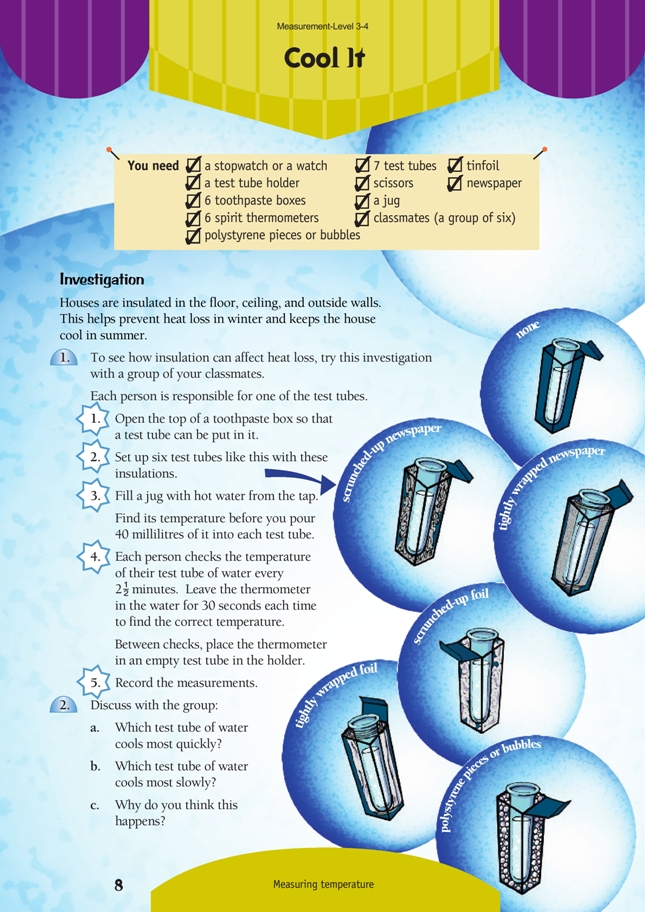This is a level 3 measurement activity from the Figure it Out series.
A PDF of the student activity is included.
Click on the image to enlarge it. Click again to close. Download PDF (429 KB)
measure temperature using a thermometer
7 test tubes and a test tube holder
a stopwatch or watch
6 spirit thermometers
FIO, Level 3-4, Measurement, Cool it, page 8
tinfoil, newspaper, scissors, jug, polystyrene pieces or bubbles
classmates (a group of 6)
Investigation
Caution: Hot water taps usually give hot water at approximately 55°C. Many primary schools do not have normal hot water taps at this temperature. You will need to ensure that water from a Zip heater or electric jug is provided between 50°C and 55°C. Do not let the students handle very hot water.
Have the students set up the six test tubes in the toothpaste packets, with another non-insulated tube in the holder. Each student should practise reading their spirit thermometer accurately and with reasonable speed.
Check that everything is ready before the students take the temperature of the water in the jug. Fill all the test tubes as quickly as is practicable then have a student start the stopwatch to measure each 21/2 minute period.
All the insulated test tubes should cool more slowly than the uninsulated one. Which test tube cools more slowly will depend on how well the insulating material “protects” the warm water from the outside environment. Just as a marble perched on a slope rolls down to level ground, so hot objects lose their heat to the surrounding environment until they are the same temperature as their surroundings. The task of the insulating material is to stop the heat being lost to the surrounding environment. Some insulators are better than others.
For background information on heat and insulation, see Science Focus: Heat in Making Better Sense of the Physical World (Ministry of Education, 1999).
The third method of heat transfer is called radiation. Another test tube could be painted in aluminium paint to see if this method of insulation can prevent heat loss.
Answers to Activity
Investigation
1. Practical activity
2. a. The uninsulated tube should cool most quickly.
b. Results may vary, depending on the effectiveness of the insulating material.
c. Hot objects cool down until they are at the same temperature as their
surroundings. Insulation slows this process down, but some insulating
materials do this better than others.
